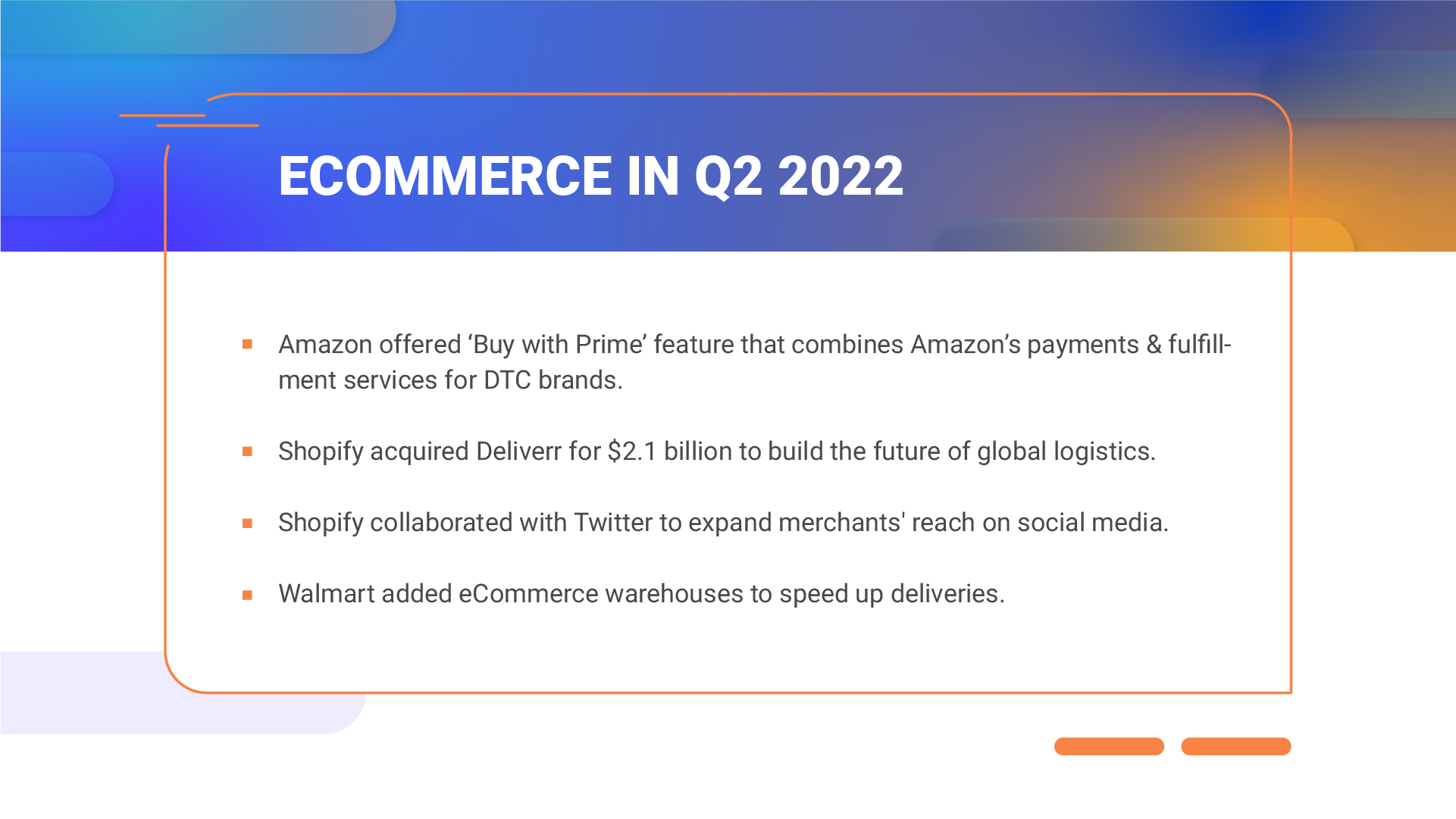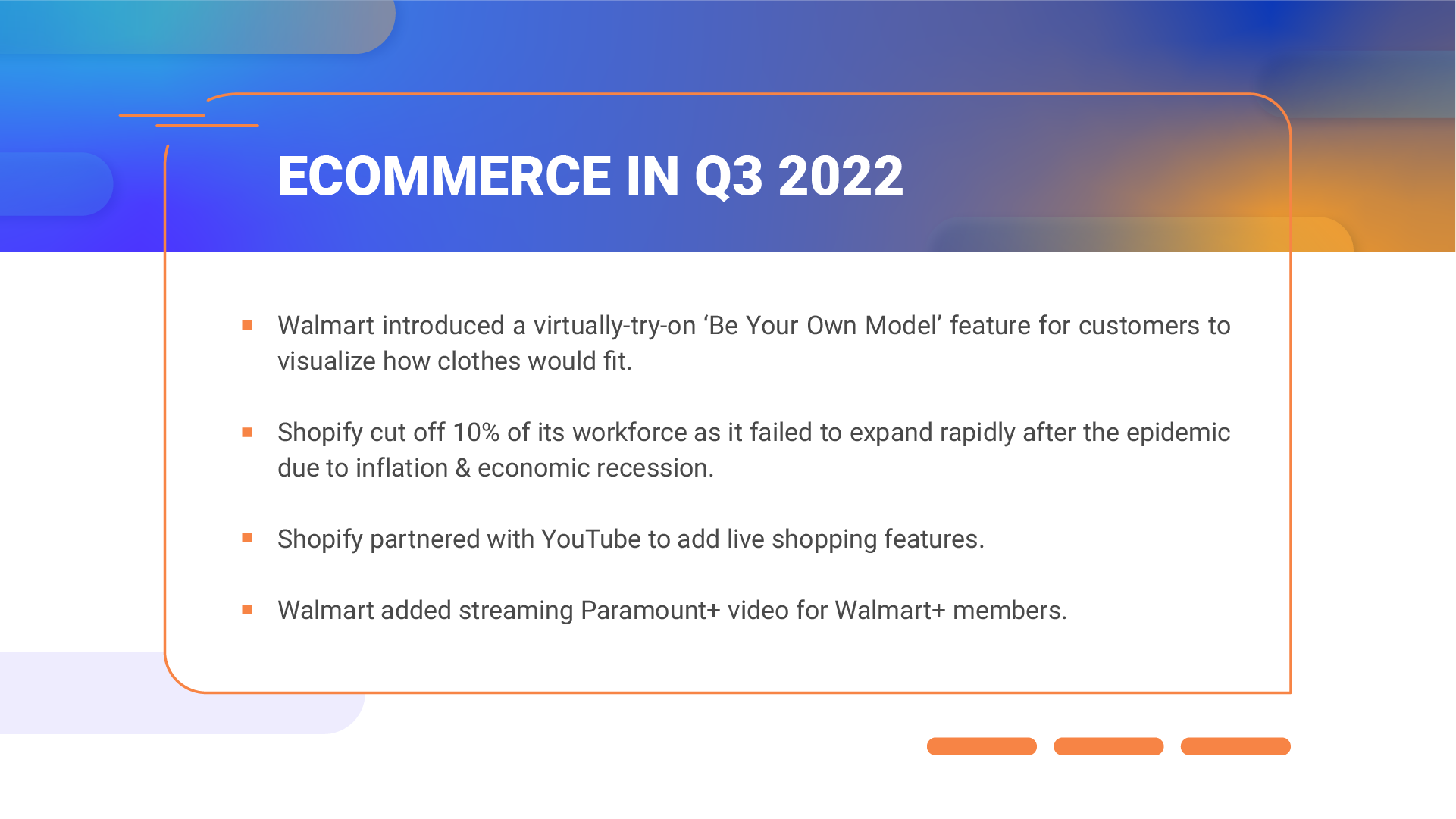ECOMMERCE REPORT 2022
2022 ECOMMERCE INSIGHTS
BEST ECOMMERCE STRATEGIES FOR 2023
BEST ECOMMERCE STRATEGIES FOR 2023
OVERVIEW
Background
2020 is a year full of challenges, 2021 is in the recovery stage, but 2022 is different. While several restrictions and bans are lifted, many countries are facing recession and inflation on a global scale. On the flip side, 2022 also witnessed a dynamic growth of technologies and innovations. These factors might have a significant influence on the eCommerce industry and how consumers purchase their products.
Ergo, it is vital that e-merchants worldwide understand the eCommerce landscape and be fully aware of the latest eCommerce trends.
LitExtension’s 2022 eCommerce report can be a trusted source to help businesses catch a glimpse of what happened this year and give advice on what they should do to adapt themselves to the evolving market.
Methodology
To compile this eCommerce report, LitExtension has gathered information from several trusting sources, particularly Statista, Digital Commerce 360, and McKinsey. All other data referenced in this paper will be cited directly when it is mentioned.
On another note, information on online selling platform trends is sourced directly from our in-house report. We have collected migration and integration data by LitExtension and LitCommerce from 01/01/2022 to 11/30/2022 when drawing conclusions in this particular section of our eCommerce report.
This eCommerce report will cover:
- 2022 eCommerce news and statistics
- Ecommerce trends 2022
- Ecommerce challenges 2022
- Best eCommerce strategies for 2023
ECOMMERCE REPORT:
WHAT HAPPENED IN 2022?
ECOMMERCE REPORT:
I. ECOMMERCE NEWS AND STATISTICS
2022 was a year with many changes. There were many profound events with impressive numbers. Via this eCommerce report, we compiled the most comprehensive eCommerce statistics and events to show how strong eCommerce growth was.
1. Ecommerce Statistics 2022
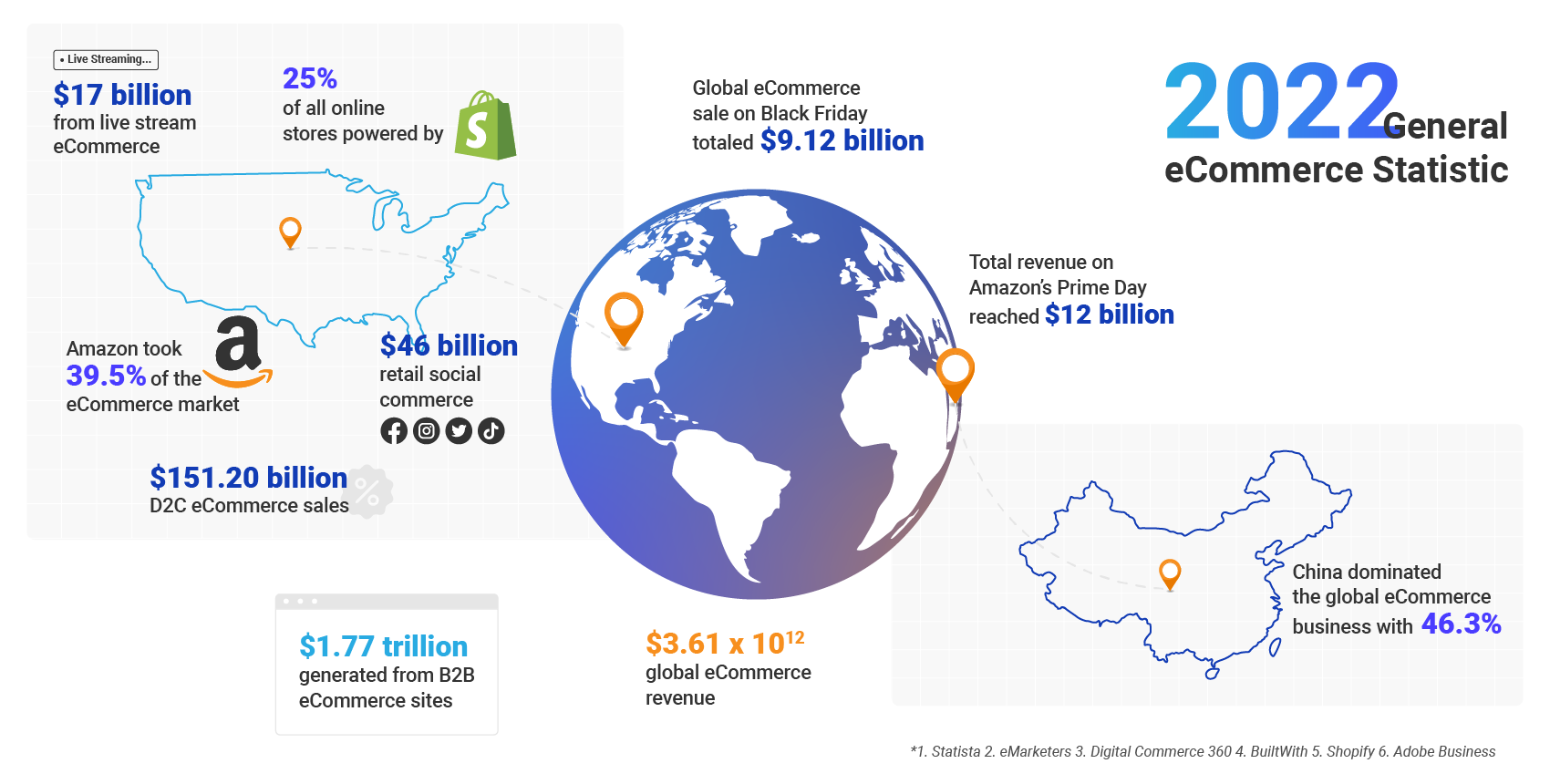
By the end of 2022, eCommerce reached $3.61 trillion, marking the beginning of a new flourishing era (Statista, 2022).
- B2B eCommerce sites reached close to $1.77 trillion and led the expanding eCommerce market.
- Live stream eCommerce in the US, revenues reached $17 billion and grew increasingly well-liked globally.
- US retail social commerce surpassed $46 billion.
- US direct-to-consumer (D2C) eCommerce sales reached $151.20 billion, up 16.9% from 2021.
- US eCommerce penetration increased marginally from 20.5% during the same period in 2021 to 20.7% in 2022.
- Shopify dominated the market for eCommerce platforms in the USA, powering 25% of all online stores.
- China dominated the global eCommerce business with 46.3% of all retail eCommerce sales (slightly over $2.8 trillion in online sales).
- Amazon took 39.5% of the US eCommerce market.
- Global eCommerce sales on Black Friday totaled $9.12 billion, up from $8.92 billion in 2021.
- Total revenue on Amazon’s Prime Day reached $12 billion.
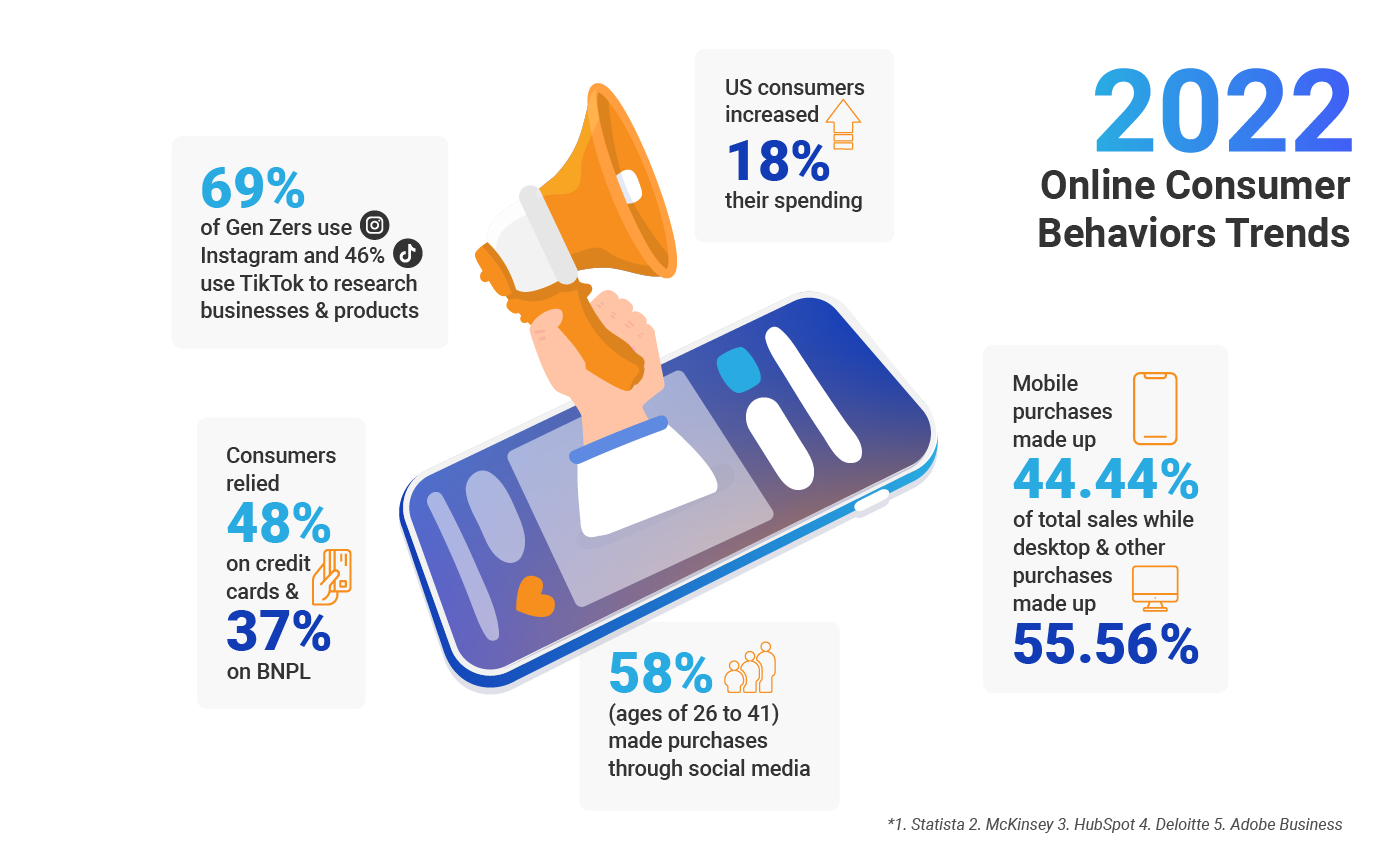
The ubiquitous usage of the internet and the increasing dominance of mobile devices and multiple digital shopping experiences are driving the exponential expansion of eCommerce.
- Between the ages of 26 and 41, 58% of online customers globally had already made purchases directly through social media.
- According to 2022 GWI Gen Z analysis, 69% of Gen Zers use Instagram, while 46% use TikTok to research businesses and products.
- US consumers increased their spending in March 2022 by 18% from the 2-year-ago period despite the inflation.
- Consumers increasingly relied on credit payment alternatives, such as credit cards (48%) and buy now, pay later (37%), to stretch holiday budgets over the holiday.
- During the year-end holiday season, mobile purchases made up approximately 44.44% of total sales ($80 billion), while desktop and other purchases made up $100 billion.
The eCommerce industry witnessed strong growth in 2022. From B2B eCommerce, D2C eCommerce to live-stream eCommerce, all sectors noticed positive signals. However, eCommerce firms should adapt and prepare for everchanging online shopping behaviors.
2. Ecommerce News 2022
There have been even more astounding stories to be captured in 2022. Last year, many large eCommerce firms worked hard to spread eCommerce penetration worldwide.
In 2022, global inflation rose from 4.7% (2021) to 8.8%, leading the global economy to witness a gloomy view. Many world’s top eCommerce companies tended to tighten their expenses, leading to massive global layoffs. However, these firms still collaborated across borders to strengthen their impact and make online selling simpler than ever.
Amazon and Walmart have constantly been providing seamless and safe selling environments for their merchants. Besides, it was a busy year for Shopify to expand its business with international collaborations and acquisitions. This eCommerce giant has been continuously updating to make the selling experience easier with multichannel and cross-border selling.
There were trends for eCommerce companies to collaborate to expand their influence in 2022. We can continue to expect that there will be more and more partnerships in the eCommerce industry. Therefore, this will still be an ideal place for all online sellers and customers.
II. LATEST ECOMMERCE TRENDS IN 2022
1. Online shopping trends
1.1. Ecommerce personalization
“eCommerce personalization has become a must-have experience.”
When talking about personalization in eCommerce, many shoppers are likely to interpret this term in a positive manner. As communications are personalized, customers feel as if they are the ‘special one’: every info delivered to them is tailored to match their unique preferences.

With the escalated demand for virtual interactions – especially post-pandemic, customers are exposed to even more eCommerce personalization practices. What used to be a ‘nice-to-have’ feature has turned into a mandatory factor in driving sales and ensuring customer satisfaction.
From websites to mobile apps, buyers now believe personalization is the default benchmark for a good online shopping experience.
Benefits of personalization in eCommerce
Personalization and customization in eCommerce are signs that let buyers know brands actually invest in a long-term customer relationship, and not just in the exchange of money. If not, businesses risk losing loyalty and performance to competitors.
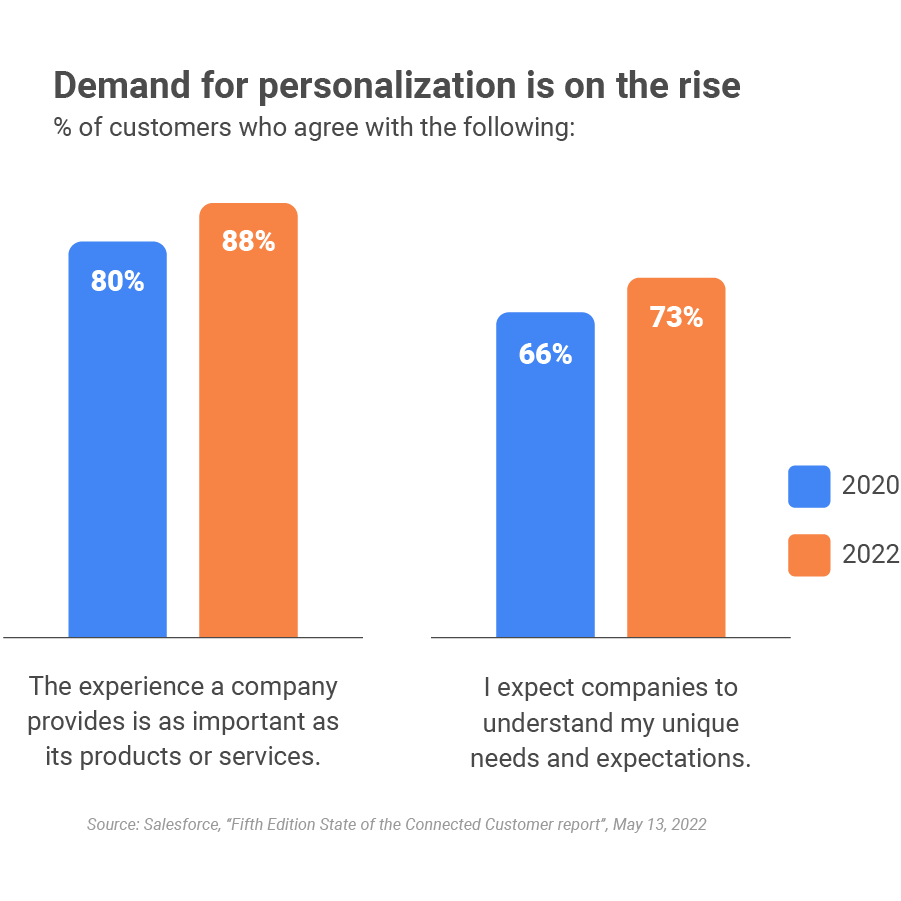
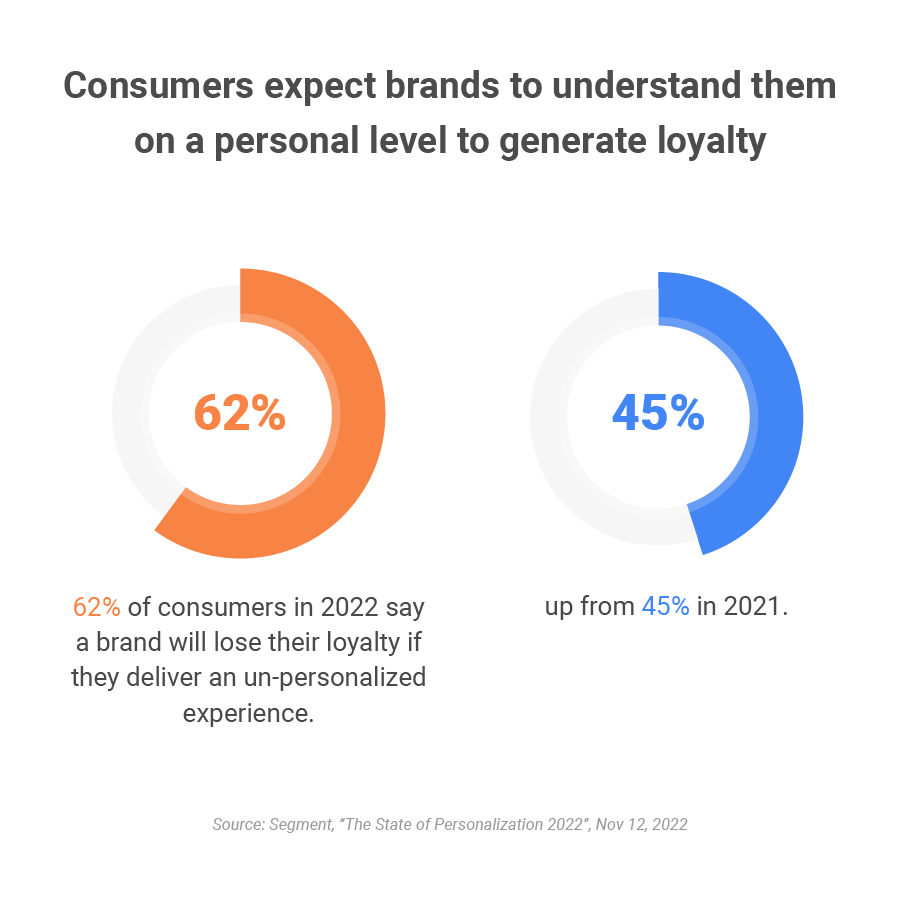
But making these worthy efforts means brands can also expect future success. Customers will respond more positively to brand content, resulting in better brand engagement and a higher conversion rate. Almost 80% of business leaders say that personalization shopping gets consumers to spend 34% more on average.
1.2. Omnichannel
“Omnichannel eCommerce continues to define customers’
online shopping behavior.”
Using multiple channels to shop has become a new norm. The report shows that 86% of buyers use at least two different channels to make one single purchase, and 70% of them admit to using more than three.
The emergence of omnichannel eCommerce has happened for a period of time. After reaching $351.23 million in 2020, omnichannel retail has been on a tear since then. This eCommerce trend is predicted to continue its surge in the next year.
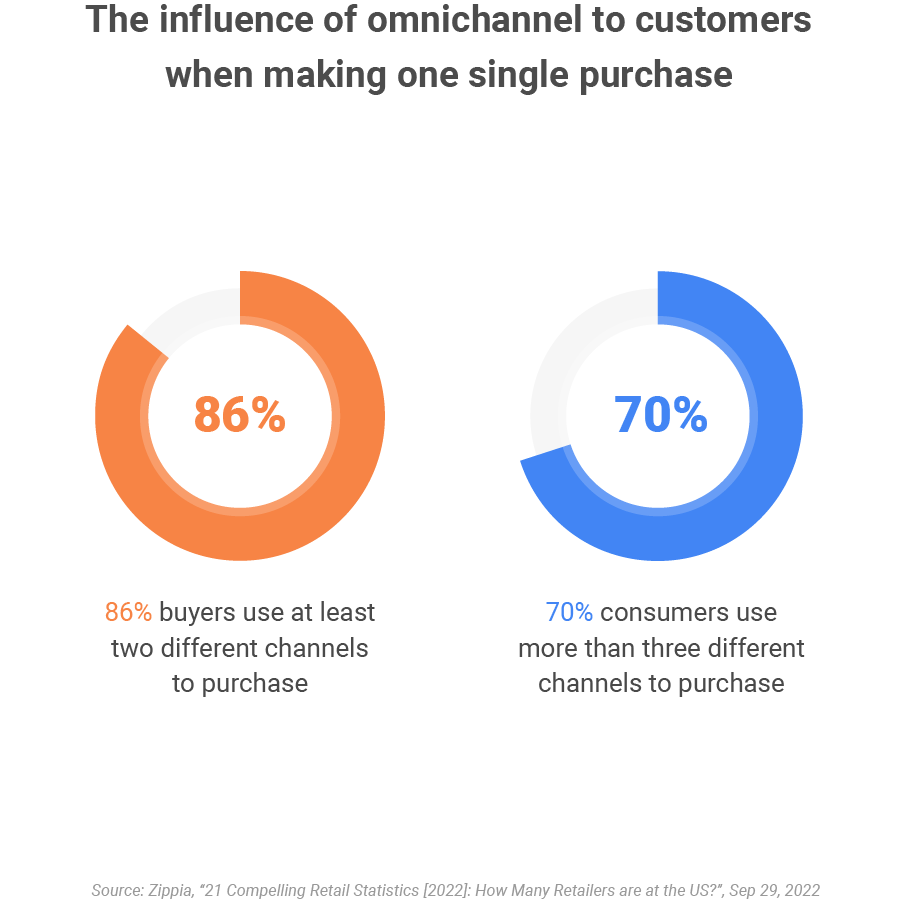
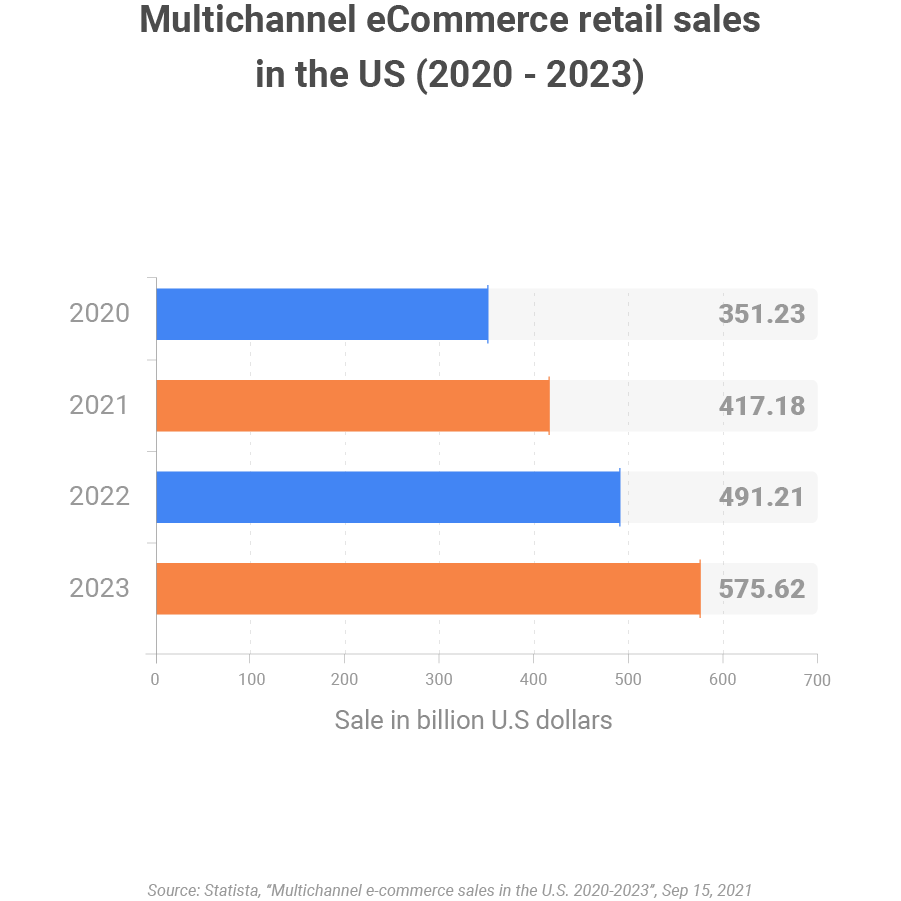
Benefits of omnichannel
The rise of omnichannel is foreseeable by virtue of its benefits to online merchants. By presenting your products in different retail channels, store owners can meet their customers at several touch points. Therefore, they can expand the brand’s reach to new customer segments and increase brand awareness.
On another note, with an effective omnichannel eCommerce strategy, businesses can create a seamless shopping experience for visitors and convert them into consumers. Ergo, merchants can take advantage of this golden opportunity to boost sales and yield more profits for their brand.
For this reason, 74% of retailers have started on or even already implemented omnichannel eCommerce. For those who have not thought about this strategy, they might be prone to decreased traffic and sales loss.
1.3. Augmented reality
“Augmented reality in eCommerce is the future of shopping.”
As technology developments allow for more immersive online shopping experiences, they also open new doors for brands to reach new potentials.
Unlike virtual reality – which sends users to an entirely computer-generated environment, augmented reality combines both the real world and virtual content. Implementing augmented reality in shopping lets customers virtually interact with brands’ products: from personalizing and trying on, to visualizing products in their own homes.
Being a part of the extended reality industry – which is growing considerably within the past year, eCommerce AR is expected to keep on increasing its global market size from 2022 onwards.
“In terms of potential, augmented reality is the next version of the Internet.”
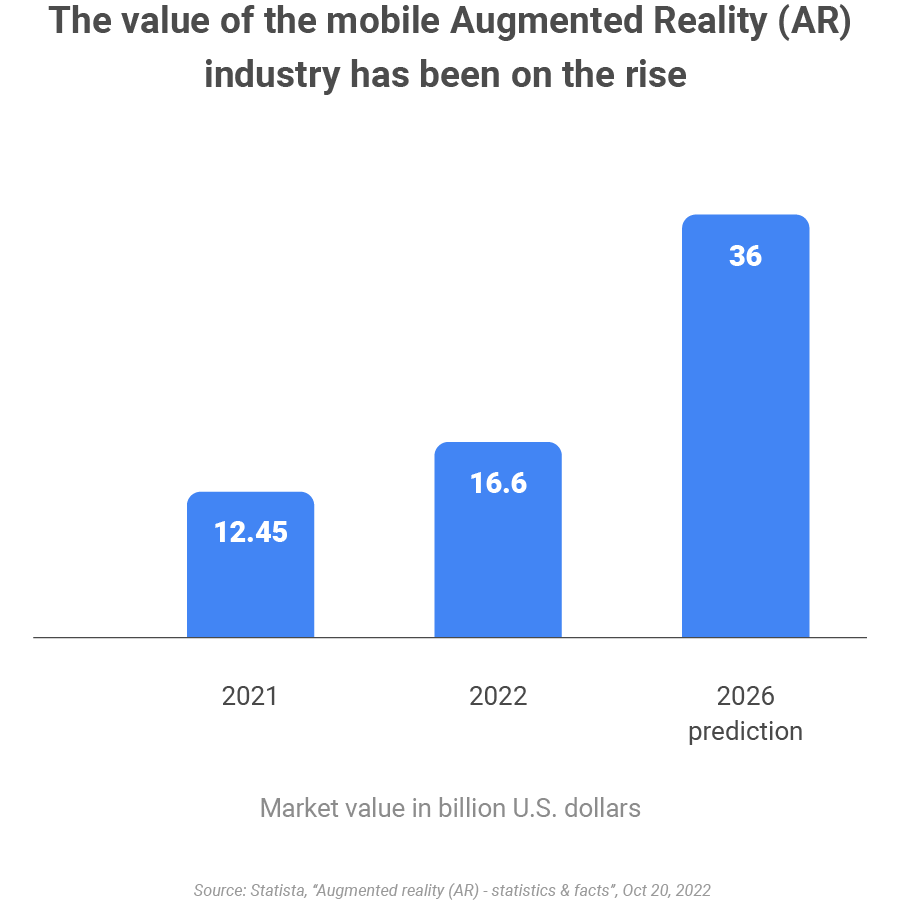
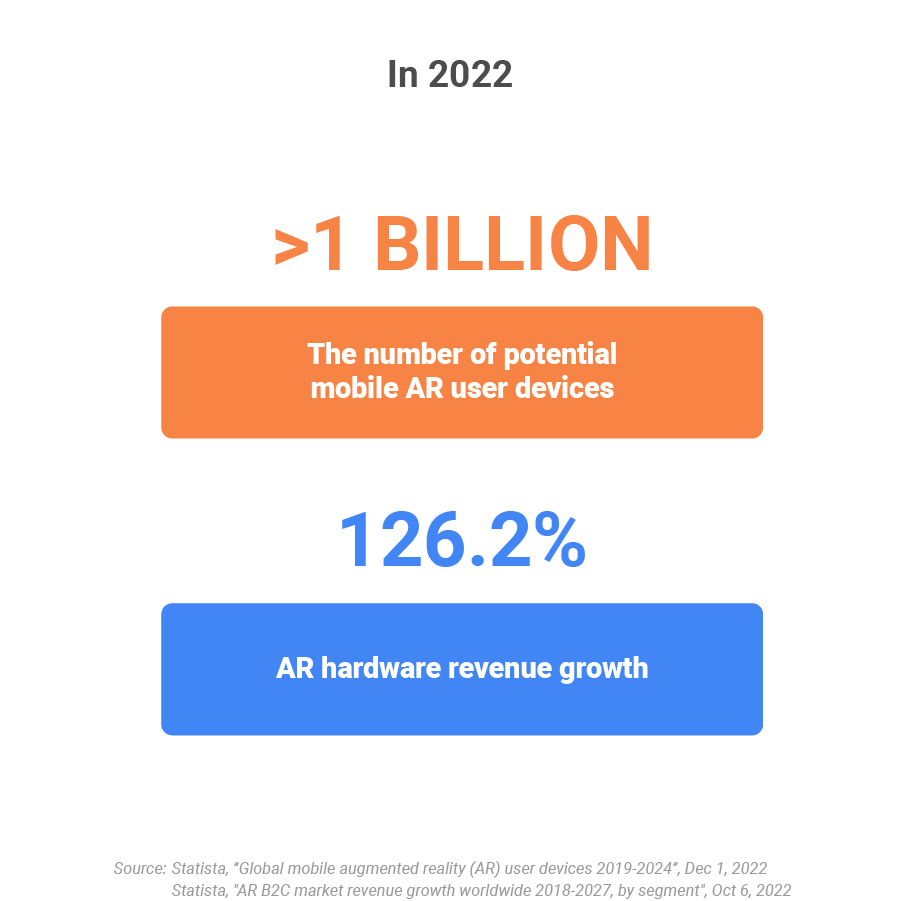
Benefits of augmented reality
Augmented reality technology enables customers to interact with online products in real time and recreate the same feeling they have when walking into a brick-and-mortar store. Online sellers can provide a more personalized and realistic eCommerce experience.
Integrating AR shopping is a savvy business tactic to make brands stand out from the competition. Eventually, this strategy will lead to a better conversion rate and heightened customer satisfaction.
1.4. D2C
“D2C brands plan to win consumers’ spending from traditional retailers.”
When brands scale up, many of them gradually lean towards taking full control of their business and managing their stocks/deliveries without relying on third parties.
This creates what we now know as the Direct to Consumer model – or D2C. Compared to the more popular B2C (Business to Consumer) model, D2C allows brands to cut out the middleman and sell directly to their customers, thus strengthening the seller-buyer relationship.
The growth of the D2C eCommerce market roots in the competition for online presence, shorter delivery time, and most importantly: better pricing.
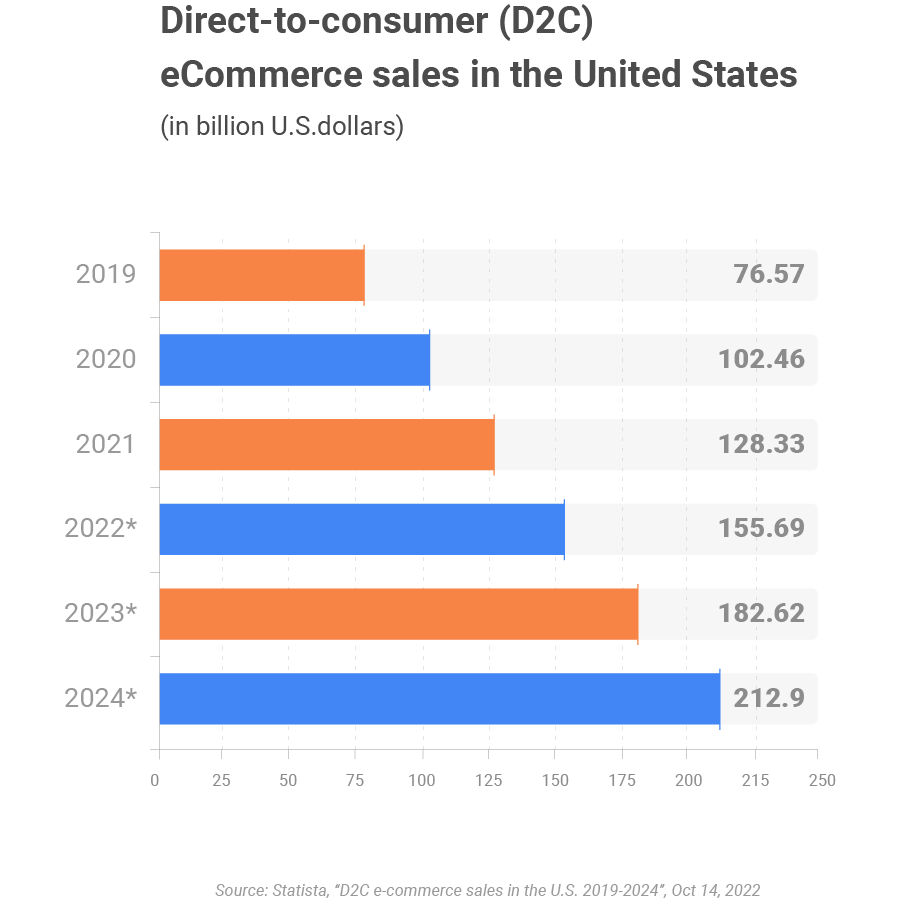
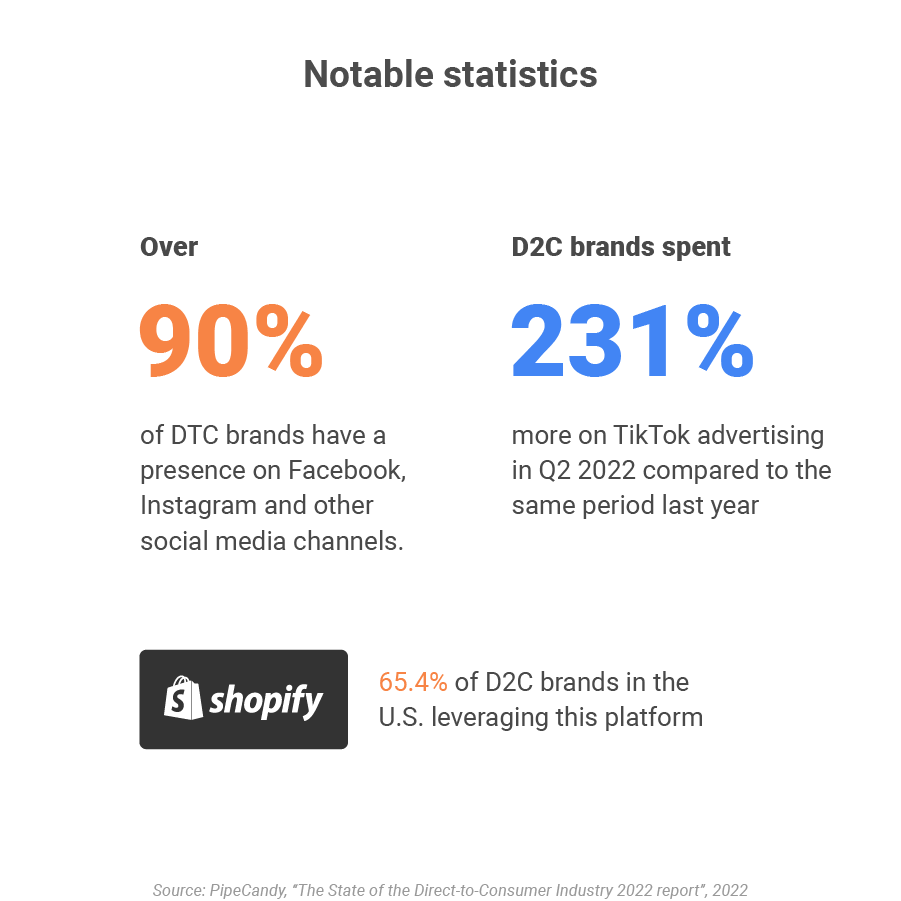
Benefits of direct to consumer retail
55% of consumers claimed that they prefer to buy from brands directly, while a further 40% of shoppers said they would purchase from a D2C brand in the next five years.
Therefore, consumer brands have been pursuing a more direct approach to online selling and establishing a closer relationship with customers.
With complete oversight of the buying journey, D2C companies enjoy more freedom to control their brand message and encourage stronger loyalty than competitors in the same industry.
1.5. Sustainable eCommerce
“Sustainable eCommerce is on top of customers’ mind when
purchasing products online.”
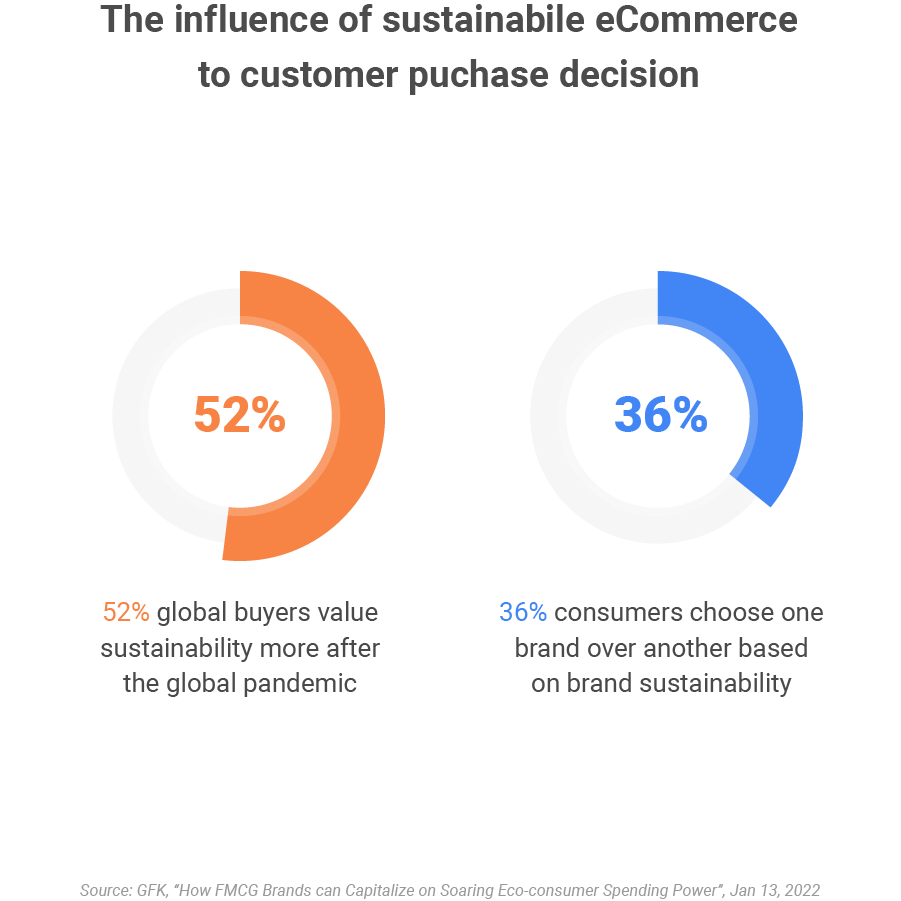
Brand sustainability has never taken a backseat in the online retail market. Amidst the global inflation situation, customers across all generations are still willing to pay more for sustainable products, as reported by FirstInsight.
Sustainable eCommerce is now an essential factor that influences consumers’ purchasing decisions. Over half of shoppers worldwide claim that they value sustainability more after the global pandemic. On top of that, 36% of global consumers will prefer one brand over another based on brand sustainability.
Benefits of sustainable eCommerce
With the steady growth in the number of environmentally-conscious consumers, it is never too tardy for brands to attract visitors by adopting green eCommerce. Furthermore, store owners can avail this golden opportunity to turn these visitors into loyal customers and thus increase their sales.
In fact, two-thirds of global consumers are inclined to purchase a more expensive product as long as it is eco-friendly. Therefore, e-merchants can grasp this opportunity to boost their revenue.
On another note, brand sustainability can be a bellwether for store owners to enhance their image. Being a sustainable eCommerce business will make a store’s presence felt. As a result, e-merchants can set themselves apart from other competitors and stay on top of customers’ minds.
1.6. Multiple digital payment
“One digital payment method at checkout is never enough to convert customers.”
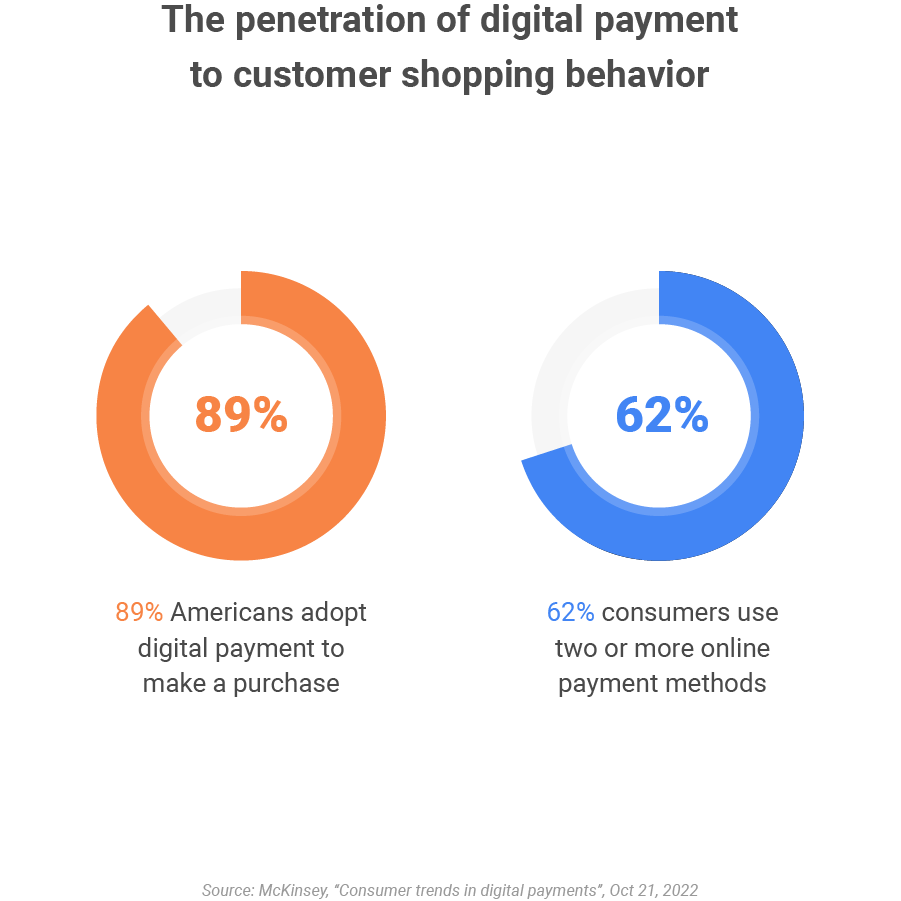
Digital payment is not among the new eCommerce trends, yet its effect still echoes down the ages. A report by McKinsey has pointed out that nearly 90% of Americans are making purchases via online payment methods, 62% of them admit to using at least two kinds of digital payment channels when shopping.
Statista also suggests that digital payment will continue to rise in the near future, reaching a total amount of $15.17 trillion in transaction value by 2027.
Benefits of multiple digital payment
According to BigCommerce, 70% of shoppers have a higher tendency to spend more at stores that offer their preferred payment methods. For this reason, e-merchants should not ignore this surging eCommerce trend.
Indubitably, with a huge number of consumers embracing digital payment, store owners can cash in on this opportunity. By offering several online payment methods, brands can create a smooth and frictionless shopping experience for their customers. Consequently, businesses can reduce cart abandonment and, on top of that, increase their sales volume.
1.7. User-generated content
“User-generated content has a huge impact on customers’ buying intent.”
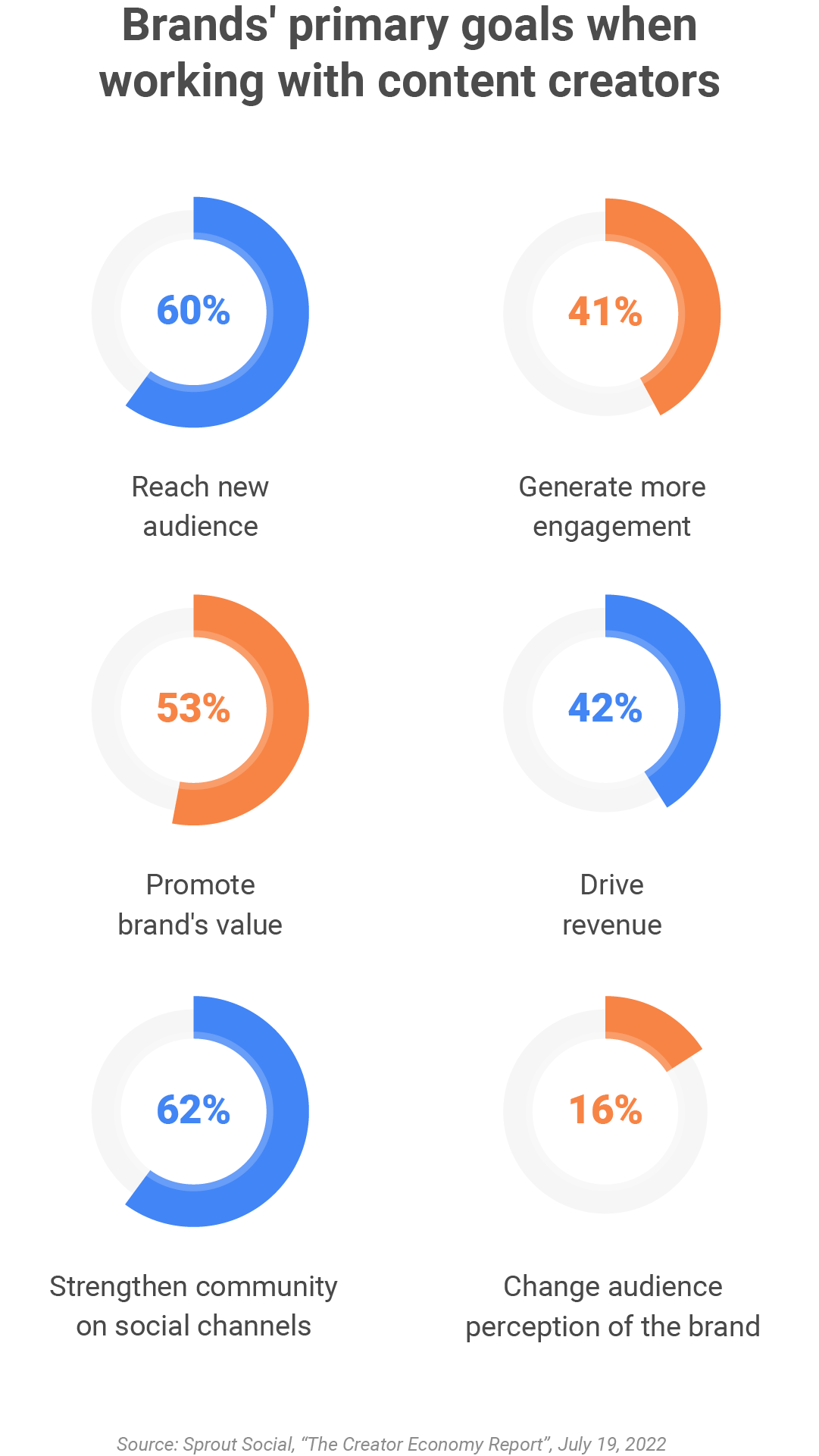
Content creators are taking the internet by storm in 2022, and with them comes an authentic way for brands to advertise on social media. User-generated content (UGC) is a land full of opportunities for brands to both nurture existing customers and attract new ones.
So why is user-generated content so important?
With smartphones in every pocket and the number of social media users continuing to grow in 2022, UGC will help brands meet consumers where they are and keep your brand top of their minds when it comes to choosing between your brand and competitors.
UGC marketing now plays such a crucial role in brands’ marketing strategy that 62% of consumer brands would work with content creators in order to generate more brand engagement.
Benefits of user-generated content
Influential creators are mostly viewed by their followers as reliable sources of information. Utilizing this mindset will allow brands to drive the audience’s buying intent effectively.
When the brand message doesn’t actually come from the brand itself, it proves to be more effective than ever. User-generated content marketing works wonders in portraying authenticity, attracting engagement, and ultimately driving sales.
Other eCommerce trends worth the mention in 2022
#1. Gamification
Ecommerce gamification takes many forms: membership points, giveaways, wheel of fortune, etc., all in an effort to reduce the abandonment rate and increase the brand’s online presence.
#2. Machine learning
Machine learning in eCommerce can be simply defined as the application of algorithms – or artificial intelligence – to analyze online store data outcomes and then apply what they ‘learned’ to new data incomes.
#3. Buy now pay later
Buy now pay later (BNPL) allows for more shopping flexibility and an increase in sales of higher ticket items. With the introduction of Paypal’s buy now pay later in June 2022, eCommerce merchants can expect the rising popularity of this payment method in the near future.
#4. Buy online pickup in store
As several bans and restrictions are lifted, consumers are now craving a chance to shop face-to-face. Therefore, buy now pickup in store, or curbside pickup, has been favored by an increasing number of customers.
#5. Social Commerce
Social commerce is not an emerging eCommerce trend, yet its effect still echoes down the age. It allows brands to expand their reach beyond websites and meet their customers on their favorite social media platforms.
#6. Digital wallet
Consumers are embracing new technologies when shopping online, especially the innovation of digital wallets. Utilizing this eCommerce trend enables e-merchants to create a seamless and frictionless shopping experience for their customers.
2. Online selling platforms trends
2.1. Shopping Cart Migration Trends 2022
Most favorite eCommerce platform type: Hosted vs OpenSource?
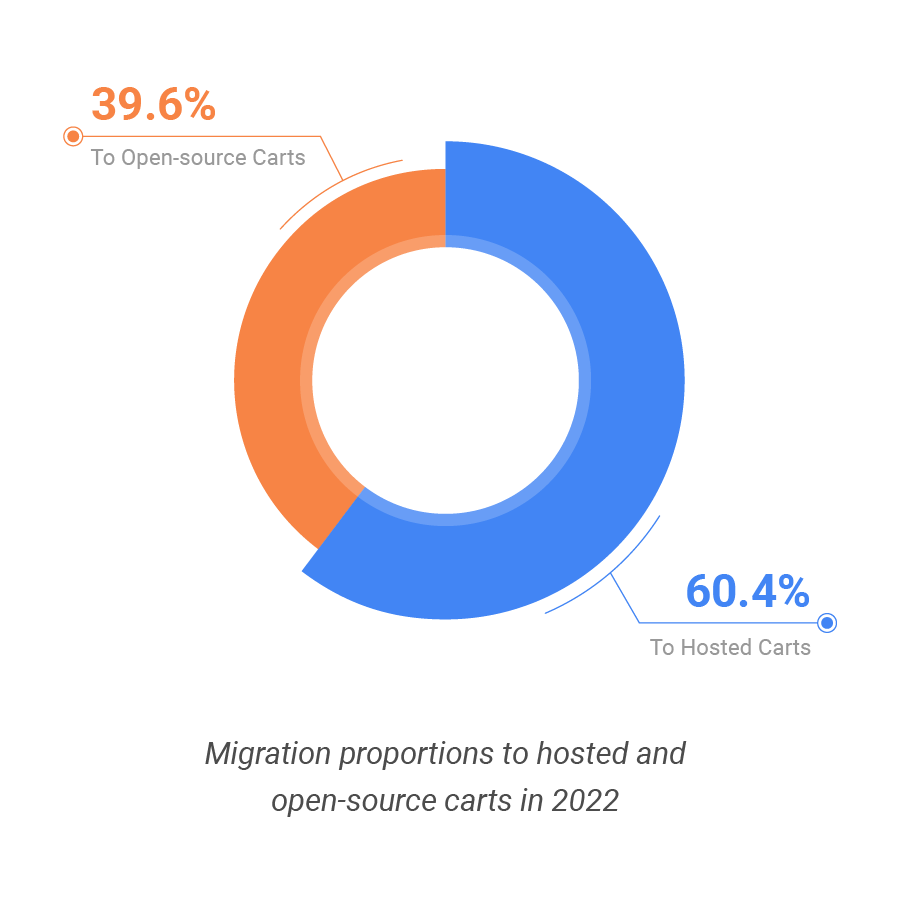
Having great ease of use, robust built-in features as well as dedicated support, hosted eCommerce solution seems to be the pathway to success for store owners. In 2022, 60.4% decided to switch to a hosted cart. By that ballpark figure, the data migration to hosted cart was one of the dominant trends in 2022.
On the other hand, 39.6% migrated to an open-source platform to enjoy endless customizability and scalability.
Most migrated-from eCommerce platforms
As can be seen from the chart, WooCommerce, Magento, OpenCart, Shopify, PrestaShop, and Wix were the most migrated-from platforms in 2022, constituting 22.1%, 16.0%, 8.1%, 7.9%, 7.3%, and 3.5%, respectively.
It is surprising to know that WooCommerce topped 1st most migrated-from eCommerce platform in 2022 since this position had belonged to Magento in 2021. WooCommerce users chose Shopify, Magento, and BigCommerce as their new prosperous destinations, with a proportion of 78.1%, 6.8%, and 3.5%, respectively.
Ranking in 2nd place, Magento witnessed negative customer retention in 2022. 39.2% switched to Shopify, and 15.0% decided to go with BigCommerce instead. Store owners switched from Magento to a hosted platform due to the fact that it’s much more complicated and expensive to continue their business with Magento.
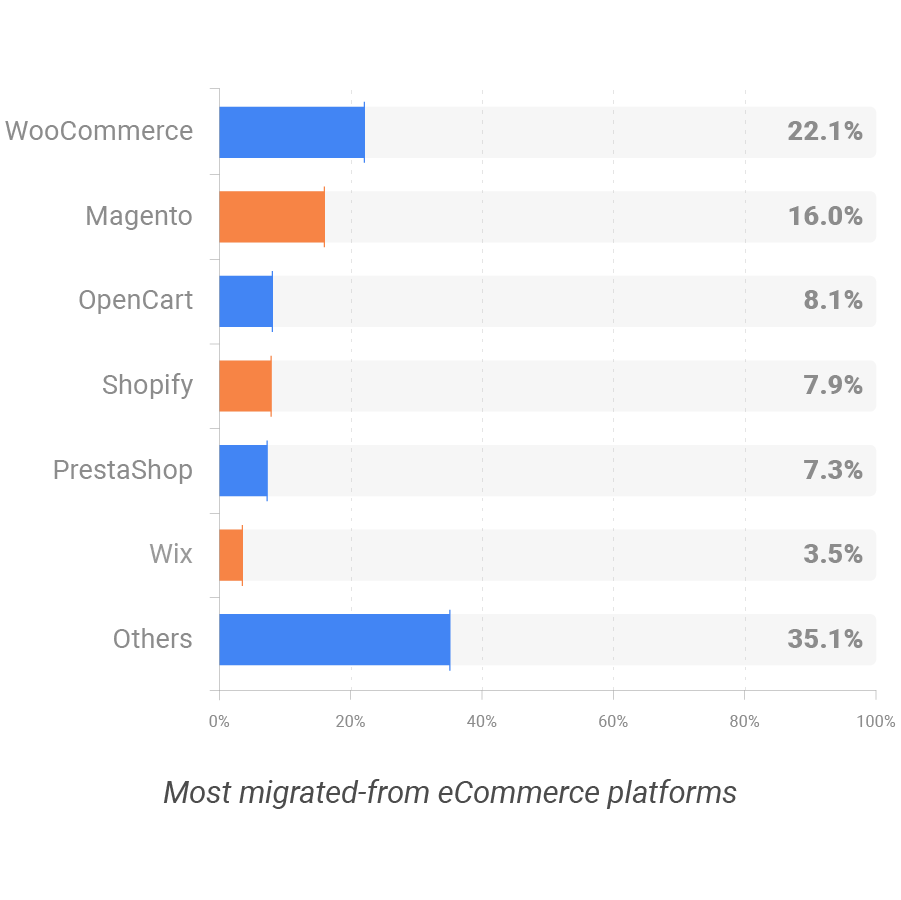
OpenCart ranked 3rd top migrated-from platforms, with 44.7% moved to WooCommerce. It can not be denied that WooCommerce has the edge over OpenCart in the majority of areas, such as integrations, customization, themes and apps, SEO, support, and ease of installation. Shopify and Magento were also other wise choices for OpenCart users.
In 2022, when users decided to move from Shopify, they headed to BigCommerce and WooCommerce. Besides, the most popular destinations for PrestaShop users were WooCommerce and Shopify. Lastly, some online sellers left Wix for Shopify and WooCommerce.
Most migrated-to eCommerce platforms
When looking at the most migrated-to eCommerce platforms in 2022, Shopify, WooCommerce, Magento, BigCommerce, OpenCart, and PrestaShop hold their ground, consisting of 43.1%, 16.9%, 10%, 5.1%, 2.6%, and 2.0% respectively.
Having a sound reputation for ease of use, Shopify is a promising destination for users of WooCommerce (40.1%), Magento (14.5%), Wix (8.1%), and OpenCart (5.4%).
Meanwhile, WooCommerce attracted new users from OpenCart (21.4%), PrestaShop (17.6%), Magento (14.2%), and Shopify (10.8%) with a plethora of themes and plugins.
Magento witnessed 63.8% upgraded to a higher version, and 15.0% migrated from WooCommerce.
When it comes to cart-to-cart migration, 2022 experienced some major trends, including Shopify and WooCommerce to BigCommerce, Magento and WooCommerce to OpenCart, and PrestaShop upgrade.
2.2. Channel Integration Trends
Most-picked Main Store setup
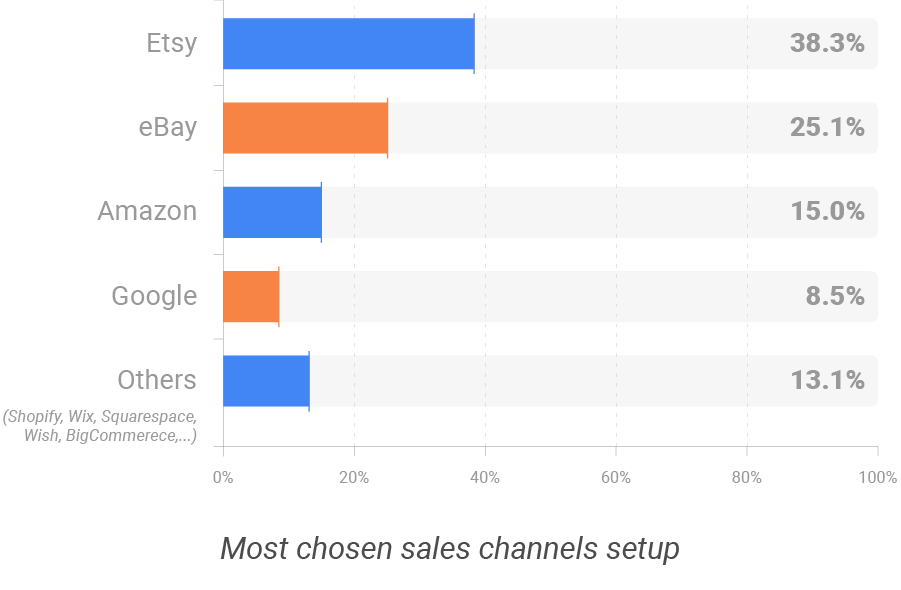
LitCommerce has defined Main Store as “the source when importing products and the place to fulfill orders from all sales channels. The Main Store is normally built on an eCommerce platform that’s connected to LitCommerce right after you create an account.”
In this part, let’s take a look at the most used eCommerce platforms when sellers begin on a multichannel journey.
By looking at the pie chart, these top 4 carts: Shopify, Wix, WooCommerce, and BigCommerce comprised 85.6% of the total number of Main Store setup.
In 2022, Shopify was the top 1 Main Store setup, accounting for 39.9%. With the availability of Shopify multichannel selling apps, store owners had a tendency to integrate with selling channels to expand and expose their business. And litCommerce Shopify integration is not an exception.
Following that was Wix with 22.4% which comes with certain basic selling features. Hence, they need to use 3rd-party apps to grow their businesses or reach more customers by integrating with litCommerce app for an easy listing process.
The 3rd place comes to WooCommerce with 18.5%. Thanks to its open-source nature, WooCommerce has a high sense of customization. Due to the fact that WooCommere enables users to list products on Google Shopping and promote their products on Facebook, there exists a trend where WooCommerce users join a multichannel selling journey.
Finally, in the 4th place, BigCommerce took 4.8% of the total integrated channels. It’s understandable that BigCommerce is perfect for middle and large-scale businesses; accordingly, having a multichannel strategy is of great importance.
Most chosen selling channels setup
The top 4 integration channels remained Etsy (38.3%), eBay (25.1%), Amazon (15%), and Google Shopping (8.5%), with a total of 86,9% most picked integrated channels. When looking at the top 4, they mostly sell general merchandise, with only one specializing in a specific product category – a craft giant Etsy.
Furthermore, this data is mainly based on the behaviours of customers from the United States, Canada, the United Kingdom, and Australia, which accounted for 61,8% of total integration processes.
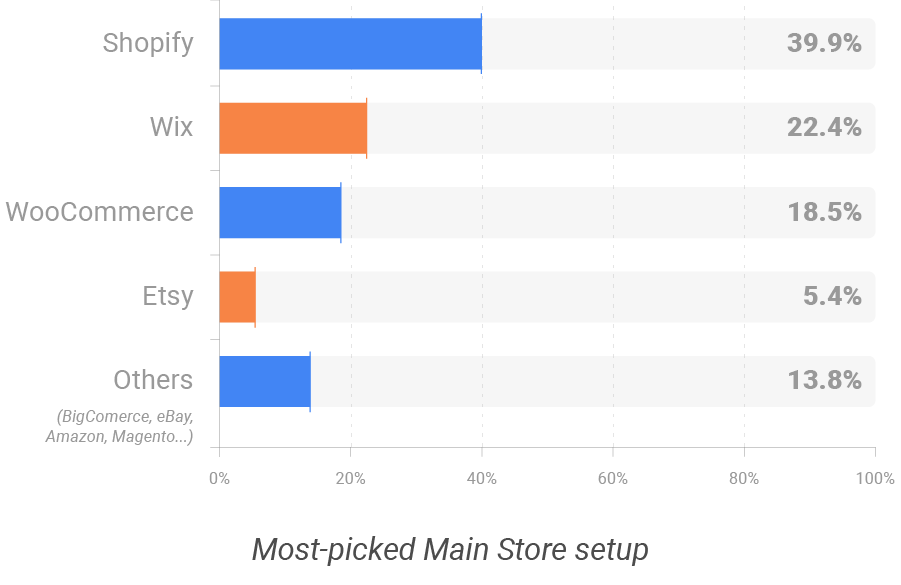
Etsy affirmed itself as the most popular destination for merchants in 2022, with 38.3%. This proportion indicates strong growth from Etsy – the non-general marketplace underscoring the popularity of handmade and craft items. With the high demand for these kinds of products, Etsy is predicted to be a dominant name in this eCommerce industry.
eBay was the runner-up after Etsy, occupying 25.1%. This sales channel is still preferable for merchants thanks to its product types allowance, such as second-hand items, collectible things, etc. Besides, the auction-style from eBay attracts both sellers and buyers the most; as a result, more and more sellers choose eBay as their suitable selling channel.
It’s no surprise that Amazon appears on this list which accounts for 15%. Amazon continues to be a popular choice for retailers and customers alike. This marketplace still dominated in the US, receiving over 2.5 billion monthly visits from US customers.
Last but not least, it is worth mentioning Google Shopping. This sales channel was the top 4th favorite channel integration, taking up 8.5%. In fact, Google Shopping is the largest search engine on the Internet; thus, this platform brings out the huge potential for sellers with over 3.5 billion searches every day.
3. Trending products
The year 2022 witnessed a global boom in online selling & shopping. Retail eCommerce reached $5.2 trillion globally in 2021, rising to $5.7 trillion.
To show the top trending products in 2022 and to recommend the emerging products for 2023, in this eCommerce report, we refer to major product categories on Amazon – the eCommerce behemoth with a 39.5% share of US retail eCommerce sales in 2022.
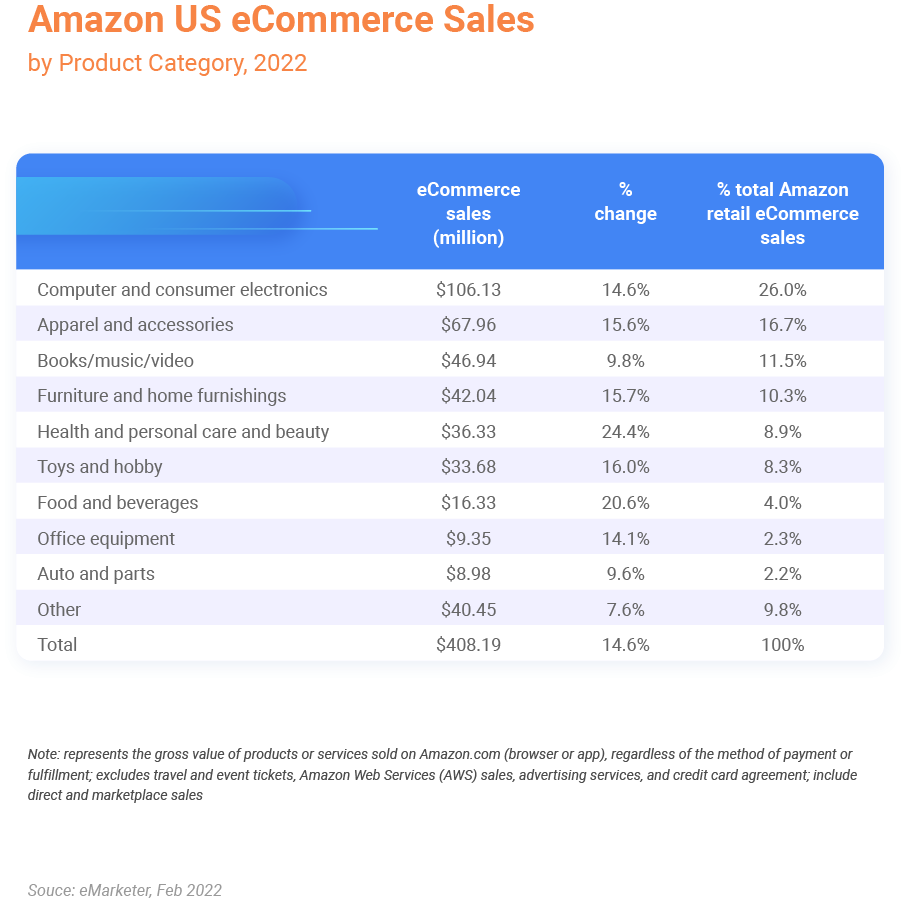
While ‘Health and personal care and beauty’ appear to be the fastest-growing category (up 24.4%), consumers continue to purchase items for significant consumer needs like ‘Furniture and home furshinishings’ (up 15.7%) and ‘Food and beverage’ (up 20.6%) as compared to 2021.
Two other majority categories continue to see demand, including ‘Apparel and accessories’ (16.7% of Amazon’s total retail sales) and ‘Books and music and video’ (11.5% of total retail sales).
In year-end holiday season, we saw high demand for ‘Computer and consumer electronic’ products, while Thanksgiving received increased demand for ‘Toys and hobby’ according to Adobe 2022 Holiday Shopping Report.
Back to the present, what products are in high demand now? Recent trending products variate with important events of the year. Google Trends, which displays the most recent search phrases that describe customer demands, is a reliable tool for finding the most popular trending products.
In 2022, consumers emerged from their pandemic cocoons. That factor triggers wants and needs for ‘Health and personal care and beauty’ and other fundamental consumer needs. Those category inches toward being an eCommerce-majority category. Therefore, e-merchants can still catch these recent eCommerce trending products in 2022 and hope for an embellishment in revenue in 2023.
III. ECOMMERCE CHALLENGES
As the overall trend for eCommerce in 2022 is the technological application in online selling, it is clear that brands are paying more attention – and investing more time and money – to cater to any possible customer request.
What used to be a normal online shopping experience: product to cart to payment, is currently considered unattractive and lacking in effort. Customers now look for a minimalized and convenient purchase, but it also has to be personalized, engaging, trustworthy, and transparent.
In a world where everything is happening online, meeting these newly-arisen demands proves to be one big puzzle for many smaller eCommerce merchants to solve in 2022.
Here are more details on why rising customer expectations is an eCommerce challenge worth acknowledging this year:
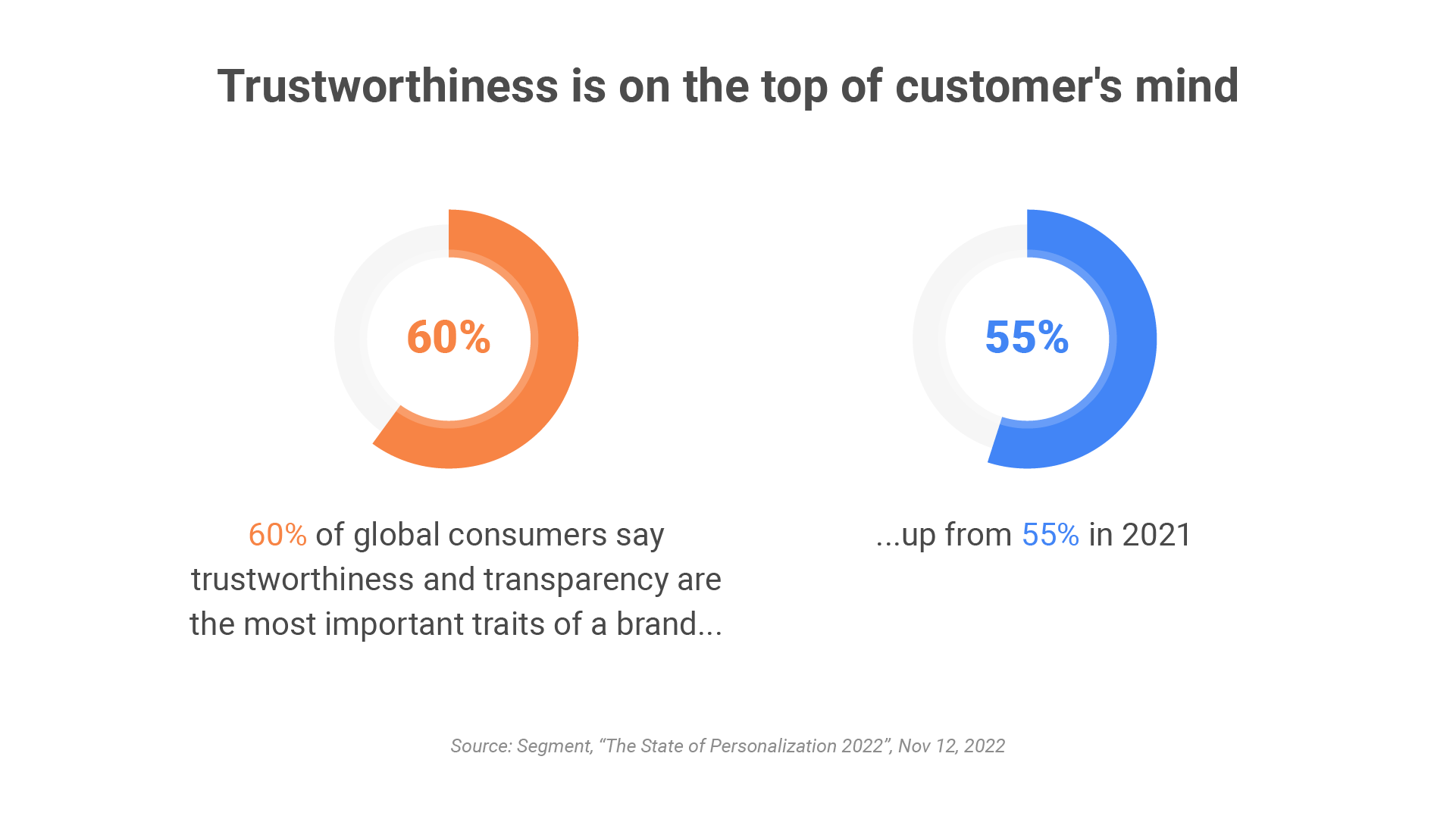
- Customers want shopping online to be more convenient and trustworthy: More than just diversity in payment gateways, payment methods, and shopping channels, customers also demand transparent post-checkout updates. They want to receive real-time updates about their orders, precise tracking, as well as expected delivery dates.
- Customers want even more care and support from brands: The booming popularity of eCommerce personalization has created a more competitive customer service environment than ever. Buyers no longer want to be treated as a number. They want to be provided with a unique shopping experience that includes constant support, a reasonable return policy, and satisfying loyalty benefits. Moreover, the crowd’s preference for AR shopping technology poses a significant challenge to small brands with fewer resources.
- Customers want to identify themselves with the products and brands they buy from: Brands also need to fulfill the requirement for customers’ identity, as they now wish to belong to a certain community or adopt a lifestyle when they shop. Sustainability is a leading factor, together with the impact of social media influencers and user-generated content.
Now that providing an optimized shopping experience has become a race between brands, managing customers’ expectations will be among the top priorities for brands from 2022. Tackling this challenge may require thorough research in order to forecast what consumers will anticipate, but all these efforts will be worth it in the long run.
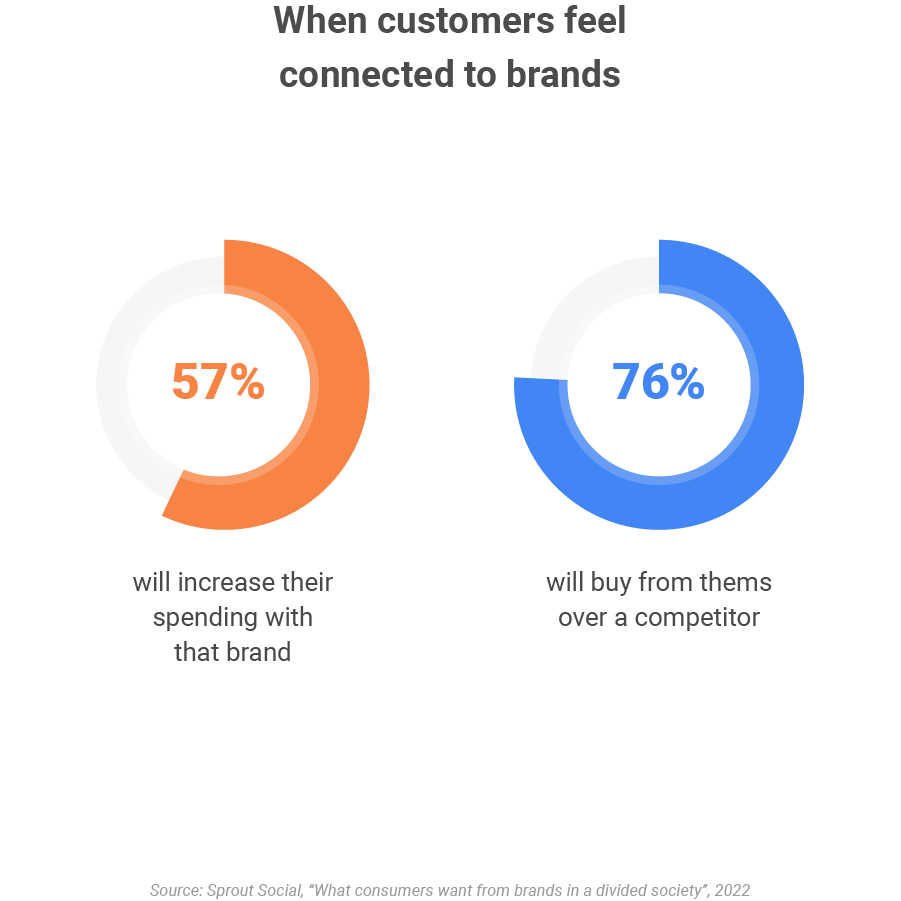
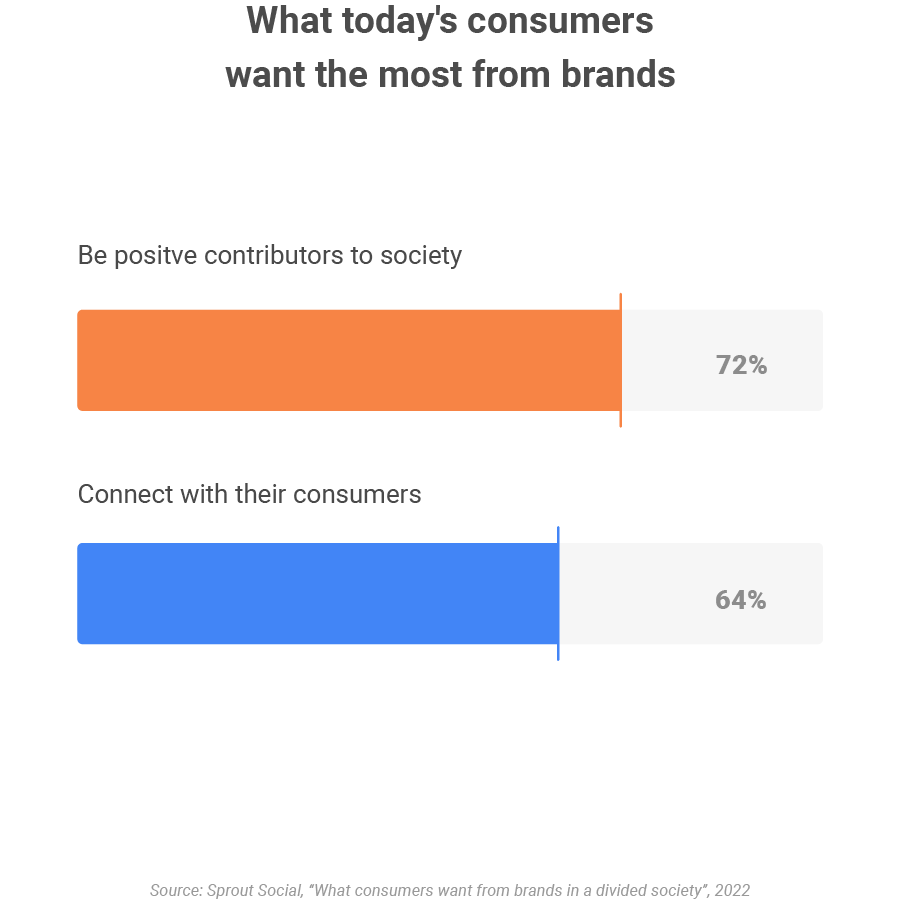
Key Takeaways
- Despite the economic slowdown and inflation at a global scale, the eCommerce landscape remained in steady growth.
- Consumers have been shifting to brands that can offer them not only high-quality products but also a good shopping journey. Therefore, the 2022 eCommerce trends all revolved around e-merchants’ attempts to improve customer experience.
- The application of technology in online selling to improve customers’ experience has become a virtual race among brands to gain customers’ preferences and satisfaction.
- ‘Computer and consumer electronic,’ ‘Apparel and accessories,’ and ‘Books and music and video’ were the top three product categories that witnessed a significant increase in sales volume in 2022.
- Shopify, WooCommerce, Magento, BigCommerce, OpenCart, and PrestaShop were the best eCommerce platforms in 2022. They were selected by thousands of online merchants and eCommerce experts as the ideal solutions for building a virtual store.
- When it comes to the best marketplace, Etsy, eBay, Amazon, and Google Shopping were at the top of customers’ minds. Many store owners chose these marketplaces to integrate and expand their businesses across different selling channels.
ECOMMERCE STRATEGIES
FOR A THRIVING 2023
ECOMMERCE STRATEGIES
1. Revolutionize product development
Normal shopping experience is way cliché. Same products but different ways of displaying can bring your customer experience to the next level. And, augmented reality (AU) can reinforce your product differentiation which gives you a competitive advantage in your market.
- Streamline product development manufacturing rather than using a traditional process in the early stages of development.
- Focus on developing product design software (software and visual target) for augmented reality product visualization.
- Combine AU and virtual reality (VR) to showcase products and drive customer decision-making.
Bring your customer shopping experience far beyond the screen and let them enter a new world of extended reality. And, ease yourself amidst the flow of revolutionary technologies.
2. Don’t fall behind – build an AI-driven business
The booming of artificial intelligence (AI) has taken the eCommerce industry. The question is how not to stay behind and apply AI to your online business. The answers lay right below:
- Adopt AI to forecast product demands effectively.
- Fully optimize and analyze customer onsite activities to enhance customized product recommendations.
- Leverage machine learning to optimize pricing strategies that refer as dynamic pricing (widely used in marketplaces like Amazon).
- Synchronize business activities like products development and marketing execution.
It’s time to stay upfront and meet every unique customization requirement on every customer order to chase the future of eCommerce.
3. Prioritize social media platforms
To win consumers’ hearts and wallets in 2023, it’s a wise move to invest more in social media marketing strategies.
With the boom of social commerce, social media is definitely the best route to market. So, what should online sellers do to grab customers’ attention?
- Develop an effective influencer marketing strategy
- Get your community involved
- Run social media contests
4. Educate with your content
Content is crucial in marketing since it helps to attract and engage audiences; drive website traffic and leads. Thereby, implementing effective content marketing strategies is the pinnacle of your business’s success.
In service of the increasing demand from the customers, e-merchants would be better off implementing the following content marketing tips:
- Repurpose user-generated content (UGC)
- Make your content evergreen
- Create awesome video content
5. Use brand core values as the bellwether to turn one-time visitors into loyal customers
Brand core values are what define and distinguish one business from other competitors in the same market. By appealing and resonating with consumers’ beliefs and values, e-merchants can stay on top of customers’ minds and stand a higher chance of converting them.
- Be consistent when conveying brand core values.
- Social commerce has been on the trend, therefore, it is important to utilize social media platforms to promote brand core values.
- With the rise of sustainable eCommerce, adopting this green mindset into brand core values can be a secret weapon to get on the customers’ side.
6. Don’t be satisfied with one checkout method only
Customers nowadays are looking for more ways to pay. Therefore, it is never too late for businesses to embrace more technologies in their checkout process.
- Legacy methods (like cash or COD) have not completely taken a backseat. Therefore, e-merchants should not ignore these traditional ways of paying.
- As digital payments have been on a roll, it is high time store owners extend their checkout selection into the digital world.
- On another note, amidst global inflation, consumers are more skeptical when it comes to financial decisions. Consequently, checkout options that allow customers to break their purchases into smaller portions and pay for them on future dates (like Instalments or Buy Now Pay Later) should be taken into consideration.
7. Focus on customer experience to win the game
With all business activities revolving around converting visitors into buyers, it is no surprise that online brands are putting more effort into improving customer experience. And there is definitely more than one way to earn a satisfactory digital customer experience:
- Use info from abandoned carts or search history to learn what your customers are interested in. This allows for better website content and more accurate custom product recommendation.
- Create customer profiles to enable a more compelling customer segmentation strategy. There are 3 different ways to segment your customers: by their demographic, psychographic, or behavioral characteristics.
- Optimize your store display to match customers’ browsing preferences. If viewers are pleased with the on-web experience, they will stick around longer, browse more products and eventually convert into leads.
8. Utilize omnichannel eCommerce
Here comes the omnichannel selling trend that businesses should constantly renovate to adapt to Omnichannel eCommerce. To stay relevant, businesses need to deliver a cohesive and consistent brand experience across all sales and marketing channels, whether they’re accessed digitally, in brick-and-mortar locations, or both.
- Research where your customers are: conduct research to understand your customers and map the entire customer journey.
- Make every touch point shoppable: integrate social media into your storefront, use AI & Chatbot.
- Bridge the gap between online and offline by offering “buy online pickup in store” (BOPIS) as customers are craving a chance to shop face-to-face.
Always look for new outlets and ways to develop your omnichannel strategies. Don’t limit yourself to one or two platforms and lack seamless integration; what you’ve seen here can coordinate your long-term growth.
9. Employ D2C sales models
Following the rise of adopting a diverse business sales model, you can switch from being a traditional retailer to a D2C retailer to make it easier to connect with the target audience and build sales processes in-house.
- Build relationships with the customers from the start by adding a chatbot to make first interactions on your website.
- Do not ignore customer reviews and testimonials, as they’re a powerful factor for any brand. Word of mouth is essential, and your business should share those reviews in ads, social media, landing pages, product pages and other relevant locations.
- Ask questions and listen to your customers: the happy ones and the unhappy ones. People want to feel heard, and you can stand out as a brand that listens.
Final Thoughts for the Coming Year… And Beyond
Here are a few recommendations to further boost your eCommerce business in 2023:
- Study the competition. To thrive, you have to keep a close eye on your rivals. What creative trends are they embracing? What innovations are they making? What are the differentiating elements? Insights into these questions will allow you to best position your business for success.
- Monitor industry news and influencers. Keep an ear open to industry news sources and influencers for alerts when it comes to shifting market conditions. Stay ahead of emerging trends and keep an eye out for challenges on the horizon and you’ll keep your advantage over the competition.
- Equip your business with the best eCommerce platforms. Knowing your competitors and catching up with the latest eCommerce trends can go a long way, but an eCommerce platform that provides what you actually need can save you much more time and effort. So, be wise to understand what your business needs. We hope this eCommerce report did help you big time!
Last but not least, regardless of what trends emerge this year, you can’t go wrong with these suggestions. We look forward to seeing where this year takes you. Here’s to a happy and prosperous 2023 for all!
We hope you found this paper insightful.
Now we’d like to hear from you about:
- Your current eCommerce platform
- Your opinion about the projected top platforms & marketplaces listed?
- Other eCommerce trends worth mentioning in the paper
Let us know by leaving a comment below right now!
Subscribe to our newsletter to update more eCommerce platforms’ news!
*Your email address will not be published*

